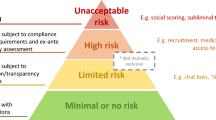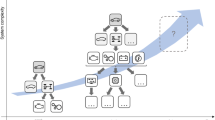Abstract
Understanding the business is an important step in information system (IS) development. Conceptual models are descriptions of the organizational context for which a system is developed, and are used to help understanding this context. However, conceptual modelling methods do not provide well-formalized ways to create domain descriptions. On the other hand, in the area of IS design and software modelling, languages exist (such as UML) that possess a high level of formality. Extending the use of these IS design languages to conceptual modelling, even though they have not been specifically intended for this, can lead to several advantages. In particular, it can enable the use of similar notation in several stages of system development. However, while object-oriented constructs such as “object” and “operation” have clear meaning in the context of software design, it is not clear what they might mean in terms of the application domain, and no rules or guidelines exist for using them to create useful descriptions of such domains. This paper suggests specific semantics for object-oriented constructs based on a mapping between ontologically derived concepts and object-oriented language constructs. The paper also proposes modelling rules to guide the construction of object-oriented conceptual models and to assure that such models describe only ontologically feasible application domain situations. While the results are applicable to object-oriented constructs in general, UML is used as an example. A case study to test the use of the proposed semantics and modelling rules is described.











Similar content being viewed by others
Notes
We provide meaning to a subset of object-oriented concepts; some concepts have only implementation meaning and do not reflect any phenomenon in the modelled domain.
A return to philosophical ontology has been argued for e.g. by [10]: “The computer science use of the term ‘ontology’... is taken as nearly synonymous with knowledge engineering in AI, conceptual modeling in databases, and domain modeling in OO design. We believe it is important... to maintain that ‘ontology’ is not simply a new word for something computer scientists have been doing for 20–30 years; ontology is 100s, if not 1000s, of years old, and there are many lessons learned in those centuries that we may borrow from philosophy along with the terms”.
In an information system, we may not know or care about all properties and instead use artificial identification attributes to represent the set of identifying properties.
We are not interested in the physical manifestations, such as an order form. These are merely vehicles to carry the description of an order.
Note that the notion of property precedence in Bunge’s ontology describes laws, not a generalization of properties.
The name of the person can be considered a mutual property of that person and the remainder of the society. However, as this remainder is usually implicit, the name can be considered an intrinsic property of the person. The changing of a property from mutual to intrinsic is termed unarization [11].
We also note that in Bunge’s ontology not having a certain a property is not considered a property; hence, a ‘null’ property has no ontological meaning.
In ontology, an instance of a sub-class is an instance of all its super-classes. However, this is not the case in object-oriented languages; although, by virtue of inheritance and polymorphism it can behave as and substitute for an instance of this super-class.
However, records of the interaction such as an application form are substantial things, but they are distinct from the interaction itself.
References
Mylopoulos J (1992) Conceptual modeling and telos. In: Locoupoulos P, Zicari R (eds) Conceptual Modeling, Databases, and Cases. Wiley, New York, NY
Booch G (1994) Object Oriented Analysis and Design with Applications. Benjamin/Cummings, Redwood City, CA
Coleman D, Arnold P, Bodoff S, Dollin C, Gilchrist H (1994) Object-Oriented Development: The Fusion Method. Prentice-Hall, Englewood Cliffs, NJ
Jacobson I (1992) Object-Oriented Software Engineering: A Use Case Driven Approach. Addison-Wesley, Wokingham, MA
OMG (2001) The Unified Modelling Language Specification. Version 1.4, The Object Management Group
Kolp M, Giorgini P, Mylopoulos J (2002) Information systems development through social strcutures. International conference on software engineering and knowledge engineering SEKE, pp183–190
Rozen S, Shasha D (1989) Using a relational system on Wall Street: the good, the bad, the ugly, and the ideal. Commun ACM 32(8):988–933
Roe P (2003) Distributed XML Objects. Joint modular languages conference JMLC, pp 63–68
Cilia M, Haupt M, Mezini M, Buchmann A (2003) The convergence of AOP and active databases: Towards reactive middleware. International conference on generative programming and component engineering GPCE, pp 169–188
Angeles P (1981) Dictionary of Philosophy. Harper Perennial, New York
Wand Y, Weber R (1993) On the ontological expressiveness of information systems analysis and design grammars. J Inf Syst 3:217–237
Noy NF, Hafner CD (1997) The state of the art in ontology design: a survey and comparative review. AI Mag 18(3):53–74
Uschold M, Gruninger M (1996) Ontologies: principles, methods, and applications. Knowl Eng Rev 11:2
Guarino N, Welty C (2002) Evaluating ontological decisions with OntoClean. Commun ACM 45(2):61–65
Bunge MA (1977) Ontology I: the furniture of the world, Vol. 3. D. Reidel Publishing Company, Dordrecht, Holland
Bunge MA (1979) Ontology II: a World of Systems, Vol. 4. D. Reidel Publishing Company, Dordrecht, Holland
Dussart A, Aubert BA, Patry M (2002) An evaluation of inter-organizational workflow modeling formalisms, Working Paper, Ecole des Haute Etude Commerciales Montreal, QC
Fettke P, Loos P (2003) Ontological evaluation of reference models using the Bunge-Wand-Weber model. Americas conference on information systems AMCIS, Tampa, FL
Green P, Rosemann M (2000) Ontological analysis of integrated process modelling. Inf Syst 25:2
Opdahl A, Sindre G (1993) Concepts for real-world modelling, Conference on Advanced Information Systems Engineering CAiSE, pp 309–327
Opdahl A, Henderson-Sellers B (1999) Evaluating and improving OO modelling languages using the BWW-model. Information Systems Foundation Workshop
Opdahl A, Henderson-Sellers B, and Barbier F (1999) An Ontological evaluation of the OML metamodel. In: Falkenberg E, Lyytinen K (eds) Information system concepts: an integrated discipline emerging. IFIP/Kluwer
Opdahl A, Henderson-Sellers B (2001) Grounding the OML meta-model in ontology. J Syst Softw 57(2):119–143
Opdahl A, Henderson-Sellers B (2002) Ontological evaluation of the UML using the Bunge-Wand-Weber model. Softw Syst Model 1(1):43–67
Parsons J, Wand Y (1997) Using objects for systems analysis. Commun ACM 40(12):104–110
Wand Y (1989) A proposal for a formal model of objects. In: Kim W, Lochovsky F (eds) Object-oriented concepts, languages, applications and databases. ACM Press/Addison-Wesley, pp 537–559
Wand Y, Weber R (1989) An ontological evaluation of systems analysis and design methods. In: Falkenberg E, Lindgreen P (eds) Information system concepts: an in-depth analysis. Elsevier science publishers, BV
Wand Y, Storey V, Weber R (1999) An ontological analysis of the relationship construct in conceptual modeling. ACM Trans Database Syst 24(4):494–528
Soffer P, Golany B, Dori D, Wand Y (2001) Modelling off-the-shelf information systems requirements: an ontological approach. Requirements Eng 6(3):183–199
Takagaki K, Wand Y (1991) An object-oriented information systems model. In: Proceedings of the IFIP working group 8.1 on the object oriented approach to information systems, Quebec City, pp 275–296
Bodart F, Weber R (1996) Optional properties versus subtyping in conceptual modelling: A theory and empirical test. International conference on information systems ICIS, p 450
Bodart F, Sim M, Patel A, Weber R (2001) Should optional properties be used in conceptual modelling? A theory and three empirical tests. Inf Syst Res 12:4
Cockroft S, Rowles S (2003) Ontological evaluation of health models: some early findings. In: 7th pacific asia conference on information systems PACIS, Adelaide, Australia
Gemino A (1999) Empirical comparisons of systems analysis modeling techniques, PhD Thesis, The University of British Columbia, Vancouver, BC
Weber R, Zhang Y (1996) An analytical evaluation of NIAM’s grammar for conceptual schema diagrams. Inf Syst J 6(2):147–170
Wand Y, Weber R (1995) On the deep structure of Information Systems. Inf Syst J 5:203–223
Fowler M, Kendall S (2000) UML distilled: a brief guide to the standard object-oriented modelling language. Addison-Wesley, Reading, MA
Parsons J, Wand Y (1991) The object paradigm - two for the price of one? Workshop on Information Technology and Systems WITS, pp 308–319
Author information
Authors and Affiliations
Corresponding author
Rights and permissions
About this article
Cite this article
Evermann, J., Wand, Y. Ontology based object-oriented domain modelling: fundamental concepts. Requirements Eng 10, 146–160 (2005). https://doi.org/10.1007/s00766-004-0208-2
Received:
Accepted:
Published:
Issue Date:
DOI: https://doi.org/10.1007/s00766-004-0208-2




